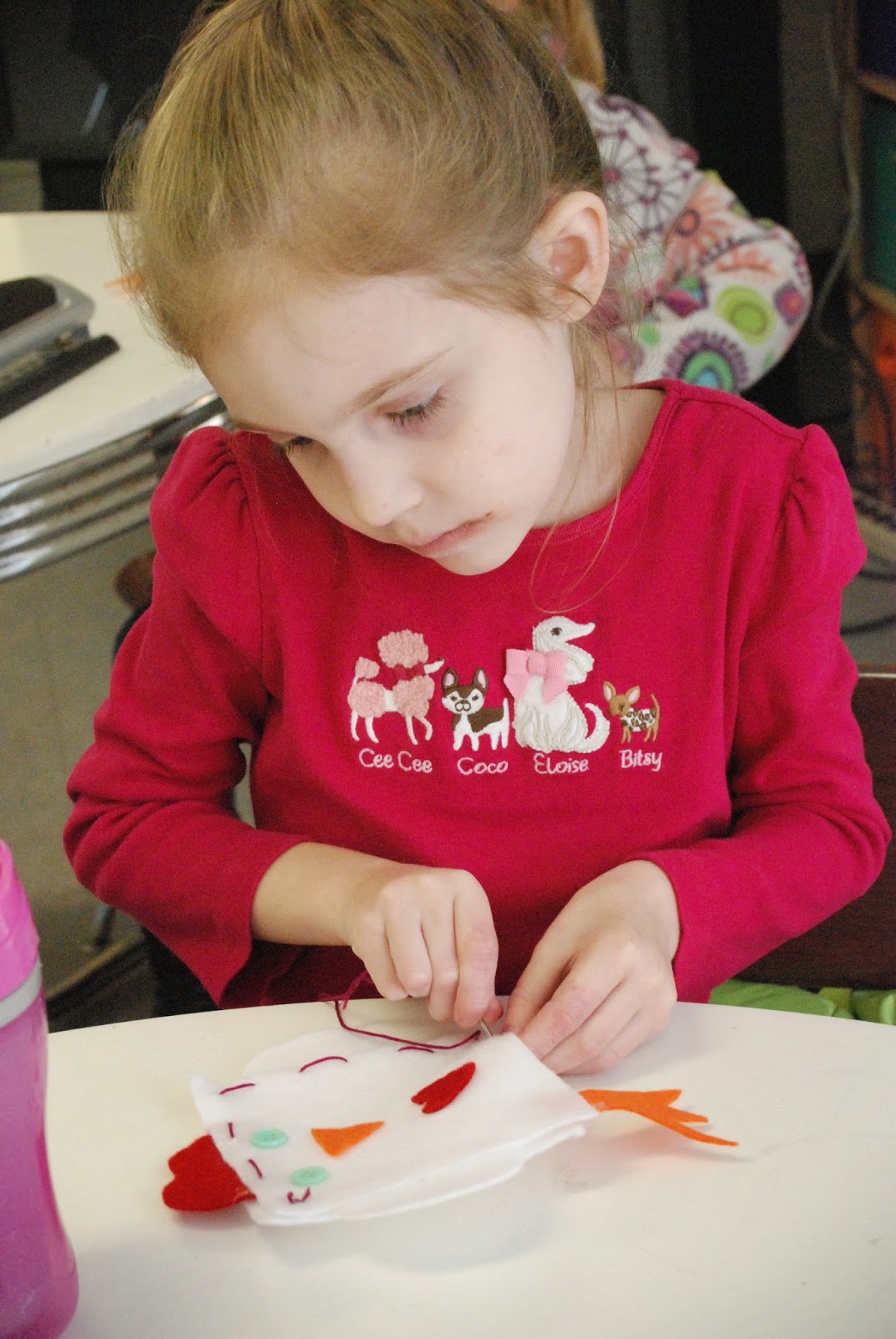Today was an exciting day!
The eggs in the incubator are at day 14… only 1 more week to go!
We began our day with a farm update. Since we last met, one of our Netherland
Dwarf does had her kits! They are tiny,
helpless newborns right now. Their eyes
are still closed, and they are buried deep in their nest of hay and fur. We cannot see them yet, but I bred timed
their kindling (birth) so that the baby kits would be strong enough to handle
for our next workshop. Of course, the
next workshop (right before Easter), is on bunnies!

The kids' seeds that they "planted" in gloves are beginning to sprout. The goat kids are growing and playing.
The turkeys and guineas are laying, and Daisy
the pig has now moved to an outdoor home.
No more piggy jumping up on my bed!
Next, we began our lesson on eggs.
The class learned about the different animals
that lay eggs.
We talked about hard
shelled and soft shelled eggs, and discussed the parts of the egg.
The class was able to look at and compare
eggs from a chicken, guinea, emu, and ostrich.
Then, we talked about different types of egg farms.
They learned about free-range chickens,
compared to confined ones.
They then
took an egg from our farm and a typical store-bought egg, cracked them open,
and compared the yolks, albumin (whites), shell, and membrane.
They were looked at the different yolk color,
as well as the spread of the whites (thick whites do not spread as far as thin
ones).
They also each broke off pieces
of the shell to compare their strength.
They peeled away the internal membranes, comparing them, as well.
While they made their observations, I
explained the importance of humidity in hatching.
If the humidity drops, the membrane dries up
around the chicks.
When this happens, we
call the chicks “shrink wrapped”.
The
chicks are unable to hatch successfully.
Hopefully, all will go well for next week’s hatch, but I prepared the
class that things do not always go smoothly!
We talked about the phrase, “Don’t count your chickens before they
hatch!”
 |
| Guinea, Chicken, Emu, & Ostrich Eggs! |

Next, we talked about chicken embryo development.
In order to explain how the yolk provides
nutrients to the developing chick, we talked about umbilical cords in
mammals.
Then, I explained that eggs are
not inside the momma hens!
Because they
are outside the body, they need their own source of nutrition.
The yolk is absorbed through the abdomen of
the embryo.
By hatch day, the chick is
completely developed, and yolk is completely gone!
The class looked at the chicken embryo
models, drawing pictures of different stages.
While they worked, I called a few back at a time to candle the
eggs!
Each child was able to clearly see
the blood vessels, the air sacs, and the squirming little chicks inside the
eggs!
We could even point out a tiny
chick foot which was pressed up against the shell!
 |
| Unfertilized egg |
After candling the eggs, the class grabbed a snack and
shared their writing assignments.
Using
the lesson from “Interrupting Chicken”, the kids wrote stories and explanations
on why people should not interrupt.
In
one class, a student wrote that if you do need to interrupt, you should apologize.
I was so excited that she pointed this out
that I called on students to come up to the front of the class and help me act
out different scenarios!
Two children
pretended to be adults, deep in conversation.
Playing the role of “the kid”, I ran up and acted out different scenarios.
Once, I actually had something important to
say.
I tried running up and blurting it
out, as well as running up and beginning with, “Sorry to interrupt, but…”
We worked through many different scenes,
which resulted in lots of giggles, but plenty of insight!
After the class read their papers, it was my turn to
read!
Instead of my typical short
children’s book, I chose to read the first half of Junie B. Jones “Peep in my
Pocket”.
The class was thrilled!
Today’s reading brought up many topics to
discuss.
Junie B. was scared to death of
ponies, and as she learned that ponies are not dangerous, her fear switched
over to roosters.
We talked not only
about farm animals, but about fear and stress.
We will finish the story next week!
Next, the class finished up their paper-cup-chicken
craft. They should be dry and ready to
take home next week! We also began the
felt pillow animal project for this workshop.
They worked to create little felt chickens. Next week, they will sew them up and stuff
them! By the end of the year, they will
have four little felt animals! Next
school year, I will continue the felt animal projects for each workshop.

 Shakespeare For Kids Workshops --- (one per semester) for students ages 10-12. Each of these workshops
will work through a different play. We will be analyzing the work, as
well as working on a group project for each workshop. The purpose of
this class is not only to have a better understanding of Shakespeare,
but to also plan, create, and present a collaborative project. This
class will be held in two 5 week workshops.
Shakespeare For Kids Workshops --- (one per semester) for students ages 10-12. Each of these workshops
will work through a different play. We will be analyzing the work, as
well as working on a group project for each workshop. The purpose of
this class is not only to have a better understanding of Shakespeare,
but to also plan, create, and present a collaborative project. This
class will be held in two 5 week workshops. 





























































